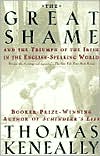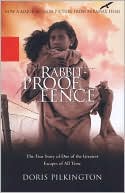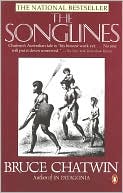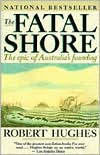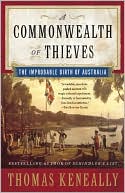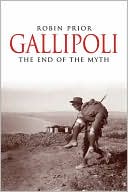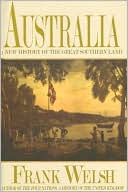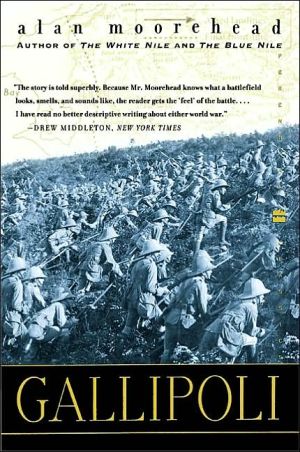The Great Shame: And the Triumph of the Irish in the English-Speaking World
In the nineteenth century, Ireland lost half of its population to famine, emigration to the United States and Canada, and the forced transportation of convicts to Australia. The forebears of Thomas Keneally, author of Schindler's List, were victims of that tragedy, and in The Great Shame Keneally has written the full story of the Irish diaspora with the narrative grip and flair of a novel. Based on unique research among little-known sources, this book surveys eighty years of Irish history...
Search in google:
In The Great Shame, Thomas Keneally—the bestselling, Booker Prize-winning author of Schindler's List—combines the authority of a brilliant historian and the narrative grace of a great novelist to present a gripping account of the Irish diaspora.The nineteenth century saw Ireland lose half of its population to famine, emigration, or deportation to penal colonies in Australia—often for infractions as common as stealing food. Among the victims of this tragedy were Thomas Keneally's own forebearers, and they were his inspiration to tell the story of the Irish who struggled and ultimately triumphed in Australia and North America. Relying on rare primary sources—including personal letters, court transcripts, ship manifests, and military documents—Keneally offers new and important insights into the impact of the Irish in exile. The result is a vivid saga of heroes and villains, from Great Famine protesters to American Civil War generals to great orators and politicians. Salon - Mary Elizabeth Williams Europe in the 19th century was a good place to be -- a heady world of scientific and artistic achievement, a land of abundance and enlightenment. Unless, of course, you happened to live in Ireland. Eroded by poverty and political strife, the island found itself wracked by a three-pronged wave of destruction -- famine, mass emigration and penal expulsions -- that decimated its population and nearly destroyed its culture and its spirit. Let a master like Thomas Keneally take on this dramatic and poignant chapter in history and it becomes something vivid and heartbreaking and very much alive. Keneally knows a thing or two about the power that comes from combining history with storytelling, as anyone who has read The Chant of Jimmie Blacksmith or Schindler's List can testify. Here he whittles the large events that shaped the fate of a nation down to the personal tragedies and victories of individuals, from politicians to petty criminals (a few of them culled from the Keneally family tree). Part of what makes The Great Shame so compelling is the smoothness with which the author moves around the globe. Observing both the rooted and the scattered, he shows not just how the outside world affected the Irish but also how the Irish changed the world. He follows the fate of male and female prisoners exiled to Australia (his own native land) for political rebellion and the flimsiest misdemeanors. He peers into ships filled with immigrants waiting in quarantine at the harbors of the United States and Canada. He swoops back to ground zero to describe the famine that started as an unfortunate potato blight and became devastatingly exacerbated by governmental ineptitude and apathy. And he explains how these tragedies spurred the Irish to far-reaching change. But Keneally's greatest gift isn't in his passionate devotion to detail (though that's unquestionably evident in his meticulous sleuthing through ship's logs, court papers and personal correspondence); it's in his flair for molding real events into memorable narratives, in the smart turns of phrase that draw the reader into the action. When he quotes a traveler who sees the sorrow of shipboard disease in a boy wearing his dead father's coat, it's an exemplary use of historical materials. When he comments on how "bacteriologically uninformed" the traveler's observation is, pointing to the fate of those who cling to epidemic-tainted mementos, it makes the passage mournful in a whole new way. The Irish all but lost their mother tongue under English repression. And yet they learned to sing their songs and to write their most famous stories and manifestos in a language adopted from their conquerors. So, too, they learned in their adopted lands to wield the political and social clout they couldn't on their own soil. Thus, for a book with such a tragedy-laden title, The Great Shame is a work of remarkable optimism: a story that reminds us how often human achievement is measured not in conquest or in riches but in simple survival against the odds.
\ \ \ \ Excerpt\ \ \ Up to the moment we write, there have been about thirty unfortunate individuals convicted under the Whiteboy Act, and therefore destined to spend the remainder of their lives in a clime far, far distant from their native homes from the land which holds all that is dear to them in the world. --Galway Free Press, 31 March 1832\ \ \ For English and Anglo-Irish noblemen, the post of Lord Lieutenant of Ireland was both a challenge and a reward. The Lord Lieutenant was chief executive of Britain's most ungovernable kingdom but also the British monarch's representative, and the centre and apogee of Irish society. In the bright July of 1833, the Lord Lieutenant happened to be a friendly and reckless 73-year-old womaniser named Richard Colley Wellesley, 2nd Earl of Mornington. He had the benefit of being the elder brother of the Duke of Wellington, conqueror of Napoleon and former Tory Prime Minister. For the mass of Irish peasants, it did not matter a great deal who held the post. The known face of their landlord or his agent, how much land they had to live off, how secure was their tenure, and what they could sell their labour for these were the intimate and recurrent concerns of their lives. People of quality though, in towns or on their estates in the west of Ireland, wanted to know about the Lord Lieutenant's movements, levees and recreation. They read, for example, accounts of that summer's Kingstown (now Dun Laoghaire) Regatta.\ "After the morning sailing races, all the Dublin establishment attended a splendid lunch in a huge marquee pitched in the Commissioner's store yard." Then the Lord Lieutenant andLord Paget returned to Dublin in separate vehicles, and in Mount Street Paget's horses and vehicle ran into a Dublin urchin. His Lordship reined in the horses to prevent his carriage crushing the child, and footmen carried the bloodied child to Mr Burrowe's, apothecary, Lower Merrion Street. There were hopes for the survival of the little sufferer. The Lord Lieutenant might have enjoyed the opportunity to be of direct effectiveness. He could not have indulged such simple hopes for the health of Ireland as he did for the health of the Mount Street urchin. For in describing the ills of the kingdom of Ireland, commentators of that period rarely knew where to start. In that very same summer of the Lord Lieutenant's encounter with "the incautious child," a peasant cottier and farm labourer from East Galway named Hugh Larkin was waiting in the county gaol in Galway city. He was to be judged for a gesture of discontent against his landlord, and so against the system represented and protected by the Lord Lieutenant, Dublin Castle and the Parliament at Westminster.\ Hugh was twenty-four years old, married, blue-eyed, robust, and 5 feet 7 1/2 inches tall. According to his East Galway descendants, he was the intense, lively, likeable son of a widowed mother. Then or later he became hard-drinking, yet his record would not imply he was reckless or utterly headstrong.\ Larkin came from a scatter of houses at a crossroads known as Lismany. This name for the landscape in which he had spent his childhood and youth bespoke pre-British ownership. The Irish name was Lios Maine, the fort of Maine, long-ago king of the region called Hy Many. This kingdom was made up of parts of modern Galway, Roscommon and a small slab of modern Tipperary. The Gaelic lords of the region had been dispossessed after the victory of the forces of England's King William III over the Irish at Aughrim, a village north-west of Lismany, in 1691.\ During Hugh's childhood people had believed that the old Gaelic system was likely to be reasserted by God in some day of jubilation, but that day now seemed too remote to save him. Hugh's depression in Galway gaol arose chiefly from homesickness for Lismany, his two infant sons, and his wife Esther Tully, whom he had married three years before in the chapel of the Catholic parish of Clontuskert.\ That very name, Clontuskert, showed that Hugh's kind of Irish walked the earth with two competing addresses in their heads. For administrative reasons, Dublin Castle had divided the country into Church of Ireland parishes, the smallest local unit, and then into larger baronies, somewhat akin to municipalities. So Larkin's official and English-language address as a member of the United Kingdom was (Church of Ireland) parish of Clontuskert, barony of Longford, County Galway. His emotional and native address, however, was (Catholic) parish of Clontuskert, diocese of Clonfert, Hy Many. Perhaps this double geography the peasants carried in their heads was one of the reasons those in power saw them as sly and duplicitous.\ Esther and Hugh, living virtually in the midlands of Ireland, spoke English, the language of government and commerce, when they talked to their landlord or went to market, but courted, sang, praised and mourned in Irish. The courtship of Hugh and Esther had been, if at all characteristic of their society, particularly ardent and poetic, driven by furious longing, observed by an entire rural community which did not countenance fornication, but put a premium on flirtation as an art, and on the extravagant use of the images of desire. Gaelic love verses and songs which have come to us in translation indicate the style of eloquent persuasion Hugh would have been required to use with Esther.
List of IllustrationsPrefaceNote on the TextMaps1Hugh Larkin's Ireland32The Shipping of Ireland, and the Exile of Chains253Assigning Ireland364The Limits of Location535Ireland and the Whitby Women596The Lass from the Female Factory677Ireland Young and Old888A Fond Farewell to the White Potatoes1029A Thousand Farewells to You, Island of St. Patrick12310Fiasco and Noble Gesture: The Rebellion of Young Ireland14111Young Ireland on Trial16712Shipping Young Ireland18413By Order of Great Denison20314Young Ireland and the Profane Colonists22415Locked within the Pyramid24716The Skeleton at the Feast26717Young Ireland and the Isms of Yankeedom29318Ireland and the Bloody Arena31619Faugh-a-Ballagh33220The Chickahominy Steeplechase34221Woefully Cut Up35522Let Me Have Idaho37723Glorio, Glorio, to the Bold Fenian Men40324Re-Making Montana; Violating Canada42925Fenians Transported45926The Fenians of the Desert Coast47127Fenians at Large49228Home Rule and Dynamite51129The Fenian Whaler53030Perth Regatta Day55031Republican Christ572Acknowledgements607Notes611Bibliography667Index679
\ From Barnes & NobleThe Irish Immigrant Experience \ It was Steven Spielberg's film that brought the horrible scope of the Holocaust to a new generation, but it was Thomas Keneally's novel, Schindler's List, that inspired Spielberg. The experience of creating such a powerful document that reached so many people and brought a significant part of history to the present day made Keneally think about trying to do the same for his own heritage.\ Five years later, he finished The Great Shame.\ Keneally was born in Australia. His ancestors were Irish and, like so many of Australia's early European settlers, some were convicts sent to this British Empire outpost in the middle of the 19th century. In fact, thousands of Irish "criminals," many of whom had committed no crime greater than opposing the British occupation of their island nation, were banished from Ireland to Australia.\ As Irish immigration spread, particularly during and after the famine of 1845, the Irish political prisoners in Australia also spread around the world, either through daring escapes from their exile or moving on after serving their sentence. Together, these two groups of people, who had left their homeland under very different circumstances, built Irish communities around the world -- from the north end of Boston to the Perth, Australia, shores of the Indian Ocean.\ Keneally is first and foremost a novelist, and it is clear from reading The Great Shame that the telling of a story built on strong characters that evokes an emotional response is as crucial to his writing as is the telling of history. Keneally uses his ancestors to populate his story, which moves effortlessly from a personal family history to a sweeping narrative of a nation of people spread around the world. Like Schindler's List, this is epic history filled with human faces.\ The "shame" of Keneally's title is as complex as his story. It is the shame Irish descendants felt for their "criminal" ancestry, a shame that was built into the Australian character and that only in the last two or three generations has begun to fade. But "the great shame" is also a lesson from history, to be shared by the English who drove people from their homeland through both malice and neglect, and, to a lesser extent, by the countries that received the exiles and immigrants and promptly deposited them at the very bottom of the social scale. And, as in his great novel of the Holocaust, Keneally's lesson is not just a historical artifact but a living moral.\ —Greg Sewell\ \ \ \ \ \ Jay P. DolanHe has the ability to weave [details] into a gripping tale....An epic tale of courage and ingenuity. \ — NY Times Book Review\ \ \ Mary Elizabeth WilliamsEurope in the 19th century was a good place to be -- a heady world of scientific and artistic achievement, a land of abundance and enlightenment. Unless, of course, you happened to live in Ireland. Eroded by poverty and political strife, the island found itself wracked by a three-pronged wave of destruction -- famine, mass emigration and penal expulsions -- that decimated its population and nearly destroyed its culture and its spirit.\ Let a master like Thomas Keneally take on this dramatic and poignant chapter in history and it becomes something vivid and heartbreaking and very much alive. Keneally knows a thing or two about the power that comes from combining history with storytelling, as anyone who has read The Chant of Jimmie Blacksmith or Schindler's List can testify. Here he whittles the large events that shaped the fate of a nation down to the personal tragedies and victories of individuals, from politicians to petty criminals (a few of them culled from the Keneally family tree).\ Part of what makes The Great Shame so compelling is the smoothness with which the author moves around the globe. Observing both the rooted and the scattered, he shows not just how the outside world affected the Irish but also how the Irish changed the world. He follows the fate of male and female prisoners exiled to Australia (his own native land) for political rebellion and the flimsiest misdemeanors. He peers into ships filled with immigrants waiting in quarantine at the harbors of the United States and Canada. He swoops back to ground zero to describe the famine that started as an unfortunate potato blight and became devastatingly exacerbated by governmental ineptitude and apathy. And he explains how these tragedies spurred the Irish to far-reaching change.\ But Keneally's greatest gift isn't in his passionate devotion to detail (though that's unquestionably evident in his meticulous sleuthing through ship's logs, court papers and personal correspondence); it's in his flair for molding real events into memorable narratives, in the smart turns of phrase that draw the reader into the action. When he quotes a traveler who sees the sorrow of shipboard disease in a boy wearing his dead father's coat, it's an exemplary use of historical materials. When he comments on how "bacteriologically uninformed" the traveler's observation is, pointing to the fate of those who cling to epidemic-tainted mementos, it makes the passage mournful in a whole new way.\ The Irish all but lost their mother tongue under English repression. And yet they learned to sing their songs and to write their most famous stories and manifestos in a language adopted from their conquerors. So, too, they learned in their adopted lands to wield the political and social clout they couldn't on their own soil. Thus, for a book with such a tragedy-laden title, The Great Shame is a work of remarkable optimism: a story that reminds us how often human achievement is measured not in conquest or in riches but in simple survival against the odds.\ — Salon\ \ \ \ \ \ Ruth Dudley EdwardsNo one can argue that The Great Shame is lacking either in ambition or in comprehensiveness.... There are two major drawbacks to this well-researched, often impressive and frequently moving book. Stylistically, it is at least two hundred pages too long...much of the relentless detail should have been chopped too. -- Literary Review\ \ \ \ \ Publishers WeeklyKeneally prefaced his Booker Prize-winning Schindler's List by noting that he had chosen to tell the true story of Oskar Schindler in novel form partially because "the novelist's craft is the only one which I can lay claim to." In the years between the publication of that novel and this remarkable new book, it appears that Keneally has banished any lingering uncertainty about venturing into nonfiction. But he hasn't left his novelist's craft behind. Combining a facility for storytelling with painstaking research, he has produced a lively, narrative history that is a model of the form. His subject is the plight of the Irish from the 19th century into the early 20th, and the experience of the Irish diaspora in the far corners of the world. In the 19th century, while Europe saw the emergence of a number of independent states, Ireland remained under the thumb of the British crown. By the end of the century, famine and emigration had reduced its population to little more than half of the 1841 total. Keneally enters this history by looking at his Australian homeland and tracing the history of his own family's Irish ancestry. Beginning with a poor farmer named Hugh Larkin (from whom Keneally's wife is descended) who was "transported" from Ireland in the 1830s for a vaguely political show of discontent toward his landlord, Keneally quickly sets the sociopolitical stage. Book I of The Great Shame follows the experience of Larkin (and through him, thousands of others like him) as a convict who ultimately earned his freedom and the opportunity to build a new life in a new land. Keneally simultaneously chronicles the rise and fall of Young Ireland, a group of elite, younger Irish statesmen who pushed for a more aggressive approach to independence than did Daniel O'Connell, who led the fight for Catholic Emancipation in Great Britain and Ireland. Among the ranks of Young Ireland were inflammatory writer and editor John Mitchel and future American Civil War hero Thomas Francis Meagher. Book II follows Meagher to the U.S., where he commanded the Union's famed Irish Brigade and introduced a new group of Irish insurrectionists, the Fenians, among whose number was one John Keneally, the author's ancestor. Keneally suggests several reasons for the "shame" of the title: failure, survival, injustice. But in capturing the resilient spirit of his subjects, and rendering their story with such a true and stirring touch, his book is a triumph, an invigorating, sprawling history of a people who flourished, as Irish, outside of Ireland. Copyright 1999 Cahners Business Information.\ \ \ \ \ Library JournalAn Australian, Keneally has written frequently on Australian themes but is best known as the author of Schindler's List, which won a Booker Prize and upon which Spielberg's movie was based. In this title, Keneally is drawn to an exploration of the Irish diaspora of the 19th century, in part through recounting the story of an ancestor of his wife, one Hugh Larkin, who in his twenties was exiled for life to Australia, leaving behind a wife and two sons, who later managed to join him. Keneally discusses the famous and the ordinary folk caught up in that dispersion to both Australia and North America. Well documented, written, and illustrated, this substantial work does require some effort, which is rewarded by a broad and deep view of the topic. Highly recommended for academic and larger libraries. [Previewed in Prepub Alert, LJ 10/1/98; BOMC and History Book Club main selections.]--Charles V. Cowling, Drake Memorial Lib., Brockport, NY Copyright 1999 Cahners Business Information.\ \ \ \ \ HaydenA brave work that leaves us with vivid impressions of "Irish ghosts" in both triumph and tragedy.\ Los Angeles Times\ \ \ \ \ \ Kirkus ReviewsIn this detour into epic history, Australian novelist Keneally (A River Town, 1995, etc.) powerfully chronicles, as he did in Schindler's List, the will to endure in the face of overwhelming catastrophe and man's inhumanity to man, but this time through Irish political prisoners transported to his country—including several ancestors. The Potato Famine of the 1840s and the resulting deaths and mass migration reduced Ireland's population by almost half within 40 years, at a time when the rest of Europe had increased in numbers. Immediately before and after the famine, spontaneous but ultimately futile protests swept the country—from "Ribbon" societies threatening landlords who dared to evict peasants, to members of "Young Ireland" who pushed for full independence in 1848. Britain's preferred method of dealing with dissent was transport to Australia. In addition to this penal colony, Britain's efforts to stamp out Irish rebellions would also influence, according to Keneally, "the intense and fatally riven politics of emigrant societies in the United States, Britain and Canada"—countries to which the prisoners would turn after escapes or pardons. Yet Keneally also recalls the indomitable resolution of Thomas Francis Meagher, the impetuous orator who later commanded the Union's famed Irish Brigade in the Civil War; John Boyle O'Reilly, who became a literary lion in his adopted city of Boston; and John Devoy, who not only organized a daring rescue of six Fenians by an American whaler in 1873, but over 40 years later helped plan Ireland's Easter Rebellion. Securely placing his characters in time while never losing sight of their individuality, he brings to life a compellingarray of exiles who, when they were not achieving glory or in their new countries, were also experiencing restlessness, disillusion, irrelevance, despair, alcoholism, and factionalism. Massive in scope, intimate in detail—and memorable in execution. (32 pages b&w photos, not seen) (History Book Club main selection; author tour)\ \
